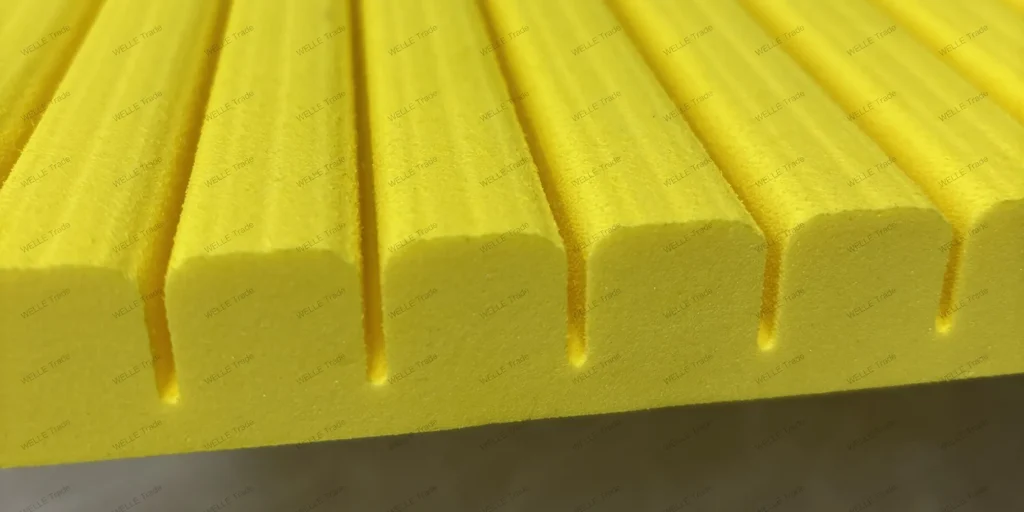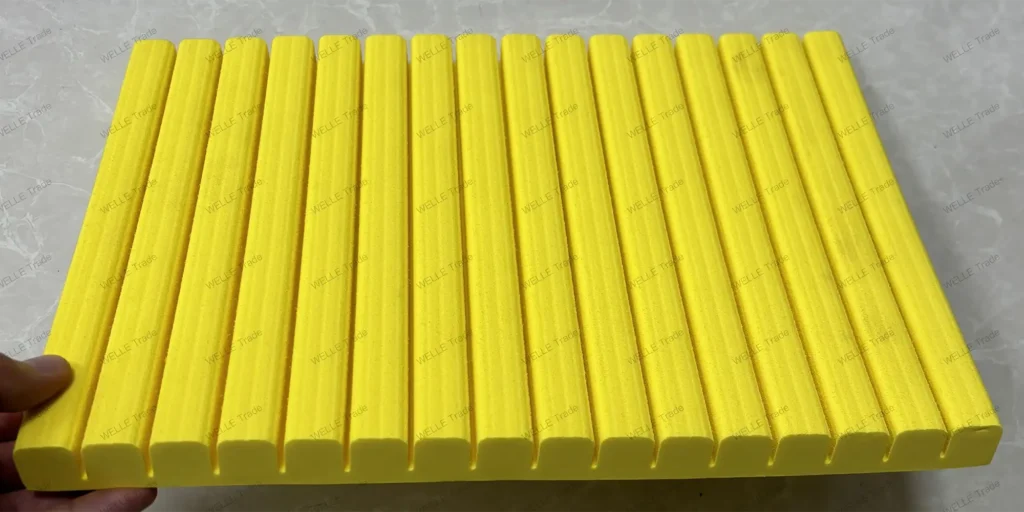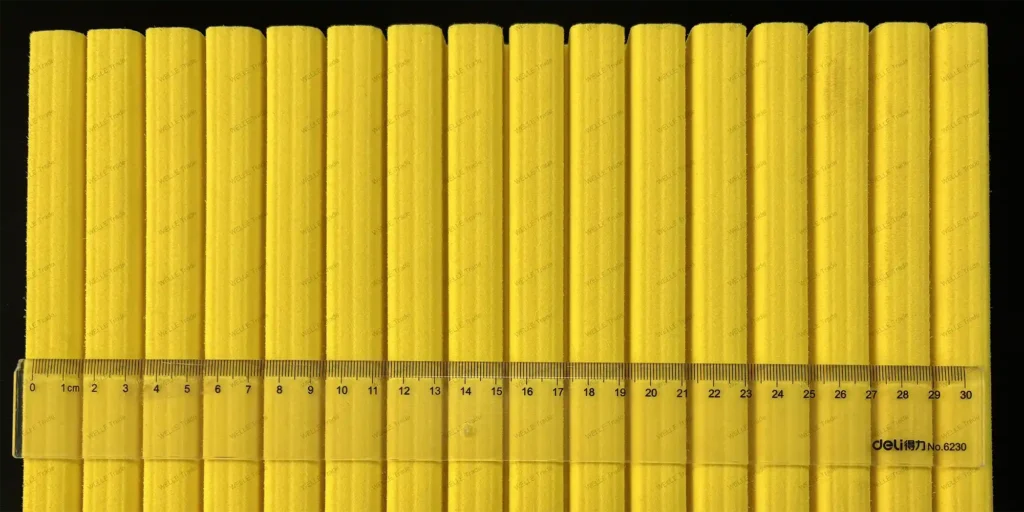Why EVA Foam is Ideal for High-Traffic Sports Areas
EVA (Ethylene Vinyl Acetate) foam has become a popular choice for sports facility construction, especially in high-traffic areas. This versatile material offers several advantages that make it ideal for environments where safety, durability, and comfort are paramount.
1. Superior Shock Absorption
One of the key benefits of EVA foam is its excellent shock absorption properties. This is particularly important in sports facilities, where athletes are constantly running, jumping, and landing on hard surfaces. EVA foam helps to cushion impacts, reducing the risk of injuries such as sprains, fractures, and concussions. This feature makes EVA foam a preferred choice for gym floors, martial arts studios, and playgrounds.
2. Durability and Longevity
EVA foam is known for its durability and resistance to wear and tear. In high-traffic sports areas, the flooring needs to withstand constant use without deteriorating quickly. EVA foam’s closed-cell structure makes it resistant to moisture, chemicals, and UV radiation, ensuring it maintains its integrity over time. This durability translates to cost savings for facility managers, as the need for frequent replacements or repairs is significantly reduced.
3. Easy Installation and Maintenance
Another advantage of EVA foam is its ease of installation and maintenance. EVA foam mats are often available in interlocking tile formats, which makes them simple to install and remove. This feature is especially beneficial for sports facilities that need to change their layout frequently or need to replace damaged sections quickly. Additionally, EVA foam is easy to clean and maintain, requiring only regular sweeping and occasional mopping with a mild detergent.
4. Enhanced Comfort and Performance
The cushioning effect of EVA foam not only helps prevent injuries but also enhances comfort and performance. Athletes training on EVA foam floors experience less fatigue due to the reduced impact on their joints and muscles. This can lead to longer training sessions and improved performance over time. EVA foam also provides a stable and slip-resistant surface, which is crucial for sports that require quick movements and changes in direction.
Comparing EVA Foam to Other Padding Materials
When considering padding materials for sports facilities, it’s important to compare EVA foam to other options available on the market. Some of the common alternatives include rubber, polyurethane, and PVC foam.
1. Rubber Flooring
Rubber flooring is a popular choice for gyms and sports facilities due to its durability and shock absorption. However, rubber flooring can be quite heavy and challenging to install. It also tends to be more expensive than EVA foam. While rubber offers good traction, it doesn’t provide the same level of cushioning as EVA foam, which can lead to discomfort and increased risk of injury over time.
2. Polyurethane Foam
Polyurethane foam is another alternative used in sports facilities. It offers good shock absorption and is available in a variety of densities and thicknesses. However, polyurethane foam can break down over time, especially when exposed to moisture and UV radiation. This makes it less durable than EVA foam in outdoor or high-traffic settings. Additionally, polyurethane foam can be more expensive and less environmentally friendly due to its chemical composition.
3. PVC Foam
PVC foam is lightweight and easy to install, similar to EVA foam. It provides decent cushioning and is resistant to moisture and chemicals. However, PVC foam is generally less durable than EVA foam and can become brittle over time. It also does not offer the same level of shock absorption, making it less ideal for high-impact sports areas. Furthermore, the production of PVC foam involves the use of toxic chemicals, which raises environmental and health concerns.
Case Studies: Successful Integration of EVA Foam in Sports Facilities
1. The Powerhouse Gym, New York
The Powerhouse Gym in New York recently upgraded its flooring to EVA foam mats in its weightlifting and cardio areas. The decision was based on the need for a durable, easy-to-maintain surface that could withstand heavy equipment and high foot traffic. Since the installation, gym members have reported a noticeable reduction in joint pain and fatigue, particularly during high-intensity workouts. The gym’s management also noted a significant decrease in maintenance costs and time, thanks to the ease of cleaning and the durability of the EVA foam mats.
2. Sun Valley Martial Arts Academy, California
Sun Valley Martial Arts Academy in California opted for EVA foam padding in its training areas to provide a safe and comfortable environment for its students. The academy specializes in various martial arts disciplines, which require a surface that can absorb impacts and reduce the risk of injury. The EVA foam mats have been instrumental in minimizing injuries and enhancing the overall training experience. The academy’s instructors have praised the mats for their slip-resistant properties, which help students maintain their footing during intense sparring sessions.
3. Greenfield Community Playground, Texas
The Greenfield Community Playground in Texas integrated EVA foam padding in its play areas to enhance safety for children. The playground previously used mulch and rubber mats, which were prone to wear and required frequent replacement. The switch to EVA foam has proven to be a cost-effective solution, with parents and community members appreciating the softer, more forgiving surface. The EVA foam mats have also helped reduce the severity of falls, ensuring a safer play environment for kids of all ages.
EVA foam padding is a superior choice for sports facility construction due to its shock absorption, durability, ease of installation, and comfort. Compared to other padding materials like rubber, polyurethane, and PVC foam, EVA foam offers a balanced combination of benefits that cater to the needs of high-traffic sports areas. The successful integration of EVA foam in various sports facilities demonstrates its effectiveness in enhancing safety, performance, and longevity. For facility managers and sports enthusiasts looking to upgrade their spaces, EVA foam is a reliable and cost-effective solution.
FAQ
1. What is EVA foam, and why is it used in sports facilities?
EVA foam, or Ethylene Vinyl Acetate foam, is a soft, flexible material known for its excellent shock absorption and durability. It is used in sports facilities to provide a safe, cushioned surface that helps prevent injuries and enhance comfort during physical activities.
2. How does EVA foam compare to rubber flooring in sports facilities?
While rubber flooring is durable and offers good traction, EVA foam provides superior cushioning and shock absorption, reducing the risk of injuries. EVA foam is also easier to install and maintain, making it a more cost-effective option for sports facilities.
3. Can EVA foam be used outdoors?
Yes, EVA foam can be used outdoors. It is resistant to moisture, chemicals, and UV radiation, making it suitable for outdoor sports areas and playgrounds. However, it’s important to choose high-quality EVA foam that is specifically designed for outdoor use to ensure maximum durability.
4. Is EVA foam safe for children’s play areas?
EVA foam is safe for children’s play areas as it provides a soft, cushioned surface that reduces the impact of falls. It is also non-toxic and free from harmful chemicals, making it a popular choice for playgrounds and indoor play zones.
5. How long does EVA foam flooring last in high-traffic areas?
The longevity of EVA foam flooring depends on the quality of the material and the level of traffic. Generally, high-quality EVA foam can last several years in high-traffic areas with proper maintenance, providing a durable and cost-effective solution for sports facilities.
#EVAFoam #SportsFacility #GymFlooring #MartialArtsMats #PlaygroundSafety #DurableFlooring #ShockAbsorption #SportsSafety #HighTrafficAreas #FitnessFacility
WELLE Trade has over 20 years of experience in the production and processing of PE/EVA/TPE foams, so you may want to consult with them if you have any sourcing needs.






